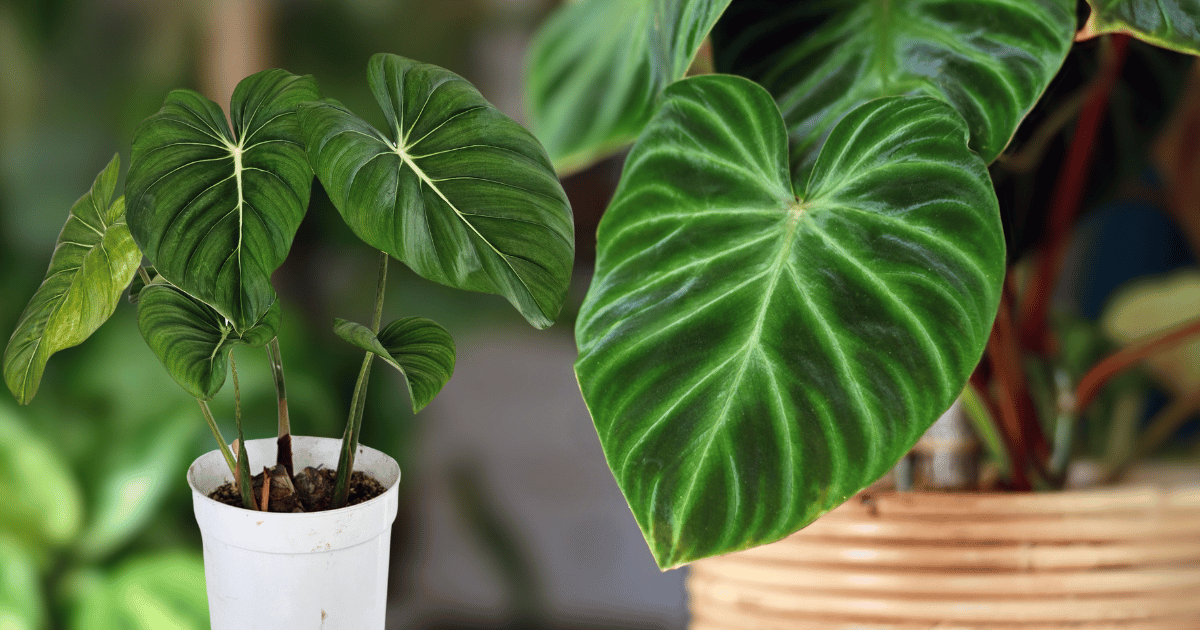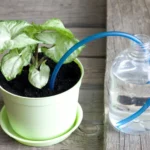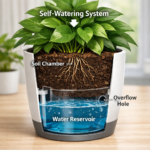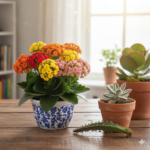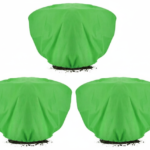Philodendron Splendid, known for its lush foliage and easy maintenance, has become a favorite among plant enthusiasts. With its large, heart-shaped leaves that showcase a vibrant green hue, this plant adds a touch of tropical elegance to any space. Native to the rainforests of South America, Philodendron Splendid thrives in various indoor environments, making it an ideal choice for novice and seasoned gardeners.
The appeal of Philodendron Splendid extends beyond its beauty. This plant is also known for its air-purifying qualities, helping to improve indoor air quality by removing toxins. Whether you want to enhance your home’s aesthetic or create a healthier living environment, Philodendron Splendid is a versatile and rewarding addition to your plant collection.
This article explores everything you need to know about Philodendron Splendid, from its origins and characteristics to care tips and joint problems. Let’s dive in and discover why this stunning plant deserves a spot in your home!
What is Philodendron Splendid?

Philodendron Splendid is a stunning tropical plant prized for its large, heart-shaped leaves and vibrant green coloration. Native to the rainforests of South America, this plant thrives in warm, humid environments but adapts well to indoor conditions, making it a popular choice for home gardeners. Philodendron Splendid’s leaves are beautiful and functional, as they help purify the air by filtering out toxins.
Known for its relatively easy care, Philodendron Splendid requires moderate light, regular watering, and occasional fertilization to maintain its lush appearance. Its climbing nature makes it perfect for trellises or hanging baskets, adding a natural elegance to any indoor space. Whether you’re a novice plant enthusiast or a seasoned gardener, Philodendron Splendid offers aesthetic appeal and health benefits, making it a versatile and rewarding addition to your plant collection.
Importance of the Plant in Indoor Gardening
Philodendron Splendid plays a significant role in indoor gardening due to its striking aesthetic and practical benefits. Its lush, vibrant leaves add a touch of tropical elegance to any indoor space, creating a calming and visually pleasing environment. The plant’s ability to thrive in various light conditions makes it highly adaptable and suitable for homes and offices alike.
Beyond its beauty, Philodendron Splendid contributes to a healthier indoor atmosphere. Like other philodendrons, it acts as a natural air purifier, removing toxins such as formaldehyde and benzene from the air. This enhances air quality, promoting better respiratory health and overall well-being.
The plant’s easy-care nature makes it accessible to gardeners of all skill levels. Its resilience to common indoor conditions reduces maintenance efforts, allowing even beginners to enjoy the benefits of indoor gardening. With its beauty, health benefits, and low maintenance, Philodendron Splendid is an essential addition to any indoor garden.
History and Origin
Native Habitat
Philodendron Splendid is native to the lush rainforests of South America, particularly in Brazil, Colombia, and Venezuela. These tropical regions provide the ideal conditions for the plant to thrive, with high humidity, warm temperatures, and dappled sunlight filtering through the forest canopy. Philodendron Splendid can climb up trees and other vegetation in their natural habitat, using their aerial roots to secure themselves and reach for the light.
Historical Significance
The genus Philodendron was first described in the early 19th century, and since then, it has captivated botanists and plant enthusiasts worldwide. Philodendron Splendid, with its distinctive, large leaves and vigorous growth, symbolises tropical beauty and resilience. Over the years, it has been cultivated and hybridized to enhance its aesthetic appeal and adaptability to indoor environments. Today, it is a beloved houseplant, cherished for its decorative qualities and easy care.
read our post to know more : Philodendron Splendid vs Melanochrysum: Comparing Two Popular Houseplants
Botanical Characteristics

Physical Description
Philodendron Splendid is characterized by its large, heart-shaped leaves that can grow up to 12-18 inches in length. The leaves have a glossy, deep green surface with prominent veins that create a striking contrast. As the plant matures, its leaves may develop a slightly wavy margin, adding to its visual interest. The stems are sturdy and often have a reddish tint, especially at the nodes where new growth emerges.
Growth Patterns
Philodendron Splendid is a climbing plant that grows vigorously under the right conditions. It can reach impressive heights when provided with a support structure, such as a moss pole or trellis. The plant uses its aerial roots to cling to surfaces, allowing it to ascend and spread its foliage.
Benefits of Philodendron Splendid
1. Aesthetic Appeal
- Lush Foliage: The large, heart-shaped leaves of Philodendron Splendid add a touch of tropical elegance to any space.
- Versatile Decor: Its vibrant green leaves complement a wide range of interior design styles, from modern to classic.
2. Air Purification
- Toxin Removal: Philodendron Splendid helps to remove common indoor pollutants such as formaldehyde, benzene, and trichloroethylene.
- Improved Air Quality: By filtering the air, it contributes to a healthier indoor environment, which can benefit respiratory health.
3. Low Maintenance
- Easy Care: It is relatively easy to care for, requiring only regular watering, occasional pruning, and indirect light.
- Resilient Nature: It can tolerate a range of indoor conditions, making it suitable for both experienced gardeners and beginners.
4. Enhances Humidity
- Natural Humidifier: The plant’s transpiration process adds moisture to the air, which can be especially beneficial in dry indoor environments.
- Health Benefits: Increased humidity can help with skin hydration and respiratory comfort.
5. Growth and Versatility
- Climbing or Trailing: Philodendron Splendid can be grown as a climbing plant with support or allowed to trail, offering flexible decorating options.
- Space Efficiency: It can adapt to various spaces, from large rooms to smaller nooks, making it a versatile choice for indoor gardening.
6. Promotes Well-being
- Stress Reduction: Plants like Philodendron Splendid can contribute to a calming atmosphere, reducing stress and improving mental well-being.
- Connection to Nature: Having indoor plants fosters a connection to nature, which has been shown to enhance mood and productivity.
7. Educational Value
- Learning Tool: Caring for Philodendron Splendid provides educational opportunities about plant growth, care, and the benefits of indoor gardening.
- Engagement: It can spark interest in botany and environmental stewardship among family members and guests.
Types of Philodendron Splendid
Philodendron Splendid is a specific hybrid known for its attractive foliage and easy care. While “Philodendron Splendid” refers to a particular plant, the genus Philodendron comprises many species and hybrids with similar aesthetic qualities. Here are some notable types related to Philodendron Splendid:
Philodendron Verrucosum
Philodendron Verrucosum is a parent plant of Philodendron Splendid. It features velvety, heart-shaped leaves with prominent veins and a striking red underside. This species is known for its beautiful foliage and climbing nature.
Philodendron Melanochrysum
Another parent plant of Philodendron Splendid,Philodendron Melanochrysum,, boasts long, dark green leaves with a velvety texture and golden veins. This plant’s elongated leaves and elegant appearance make it a collector’s favourite.
Philodendron Gloriosum
Philodendron Gloriosum is renowned for its large, heart-shaped leaves with a velvety texture and white veins. Unlike many climbing philodendrons, this species is a crawler, spreading horizontally rather than vertically.
Philodendron Micans
Philodendron Micans is valued for its small, velvety leaves that shimmer with shades of bronze and green. This trailing plant is perfect for hanging baskets or shelves, adding a touch of elegance to any indoor space.
Philodendron Hederaceum
Commonly known as the Heartleaf Philodendron, this plant has smaller, heart-shaped leaves that are smooth and glossy. Due to its hardiness and adaptability, it’s an excellent choice for beginners.
Ideal Growing Conditions
Light Requirements
Philodendron Splendid thrives in bright, indirect light. Direct sunlight can scorch its leaves, while too little light can slow its growth and diminish its vibrant colour. Placing the plant near an east or north-facing window is ideal, or you can use sheer curtains to diffuse the light if it’s near a sunnier spot.
Temperature and Humidity Preferences
Philodendron Splendid prefers a warm, humid environment, mimicking its native tropical habitat. The optimal temperature range is between 65°F and 80°F (18°C to 27°C). It’s essential to avoid exposing the plant to temperatures below 55°F (13°C), as this can cause damage.
Humidity levels should be kept high, ideally above 60%. You can increase humidity by using a humidifier, placing a tray of water and pebbles near the plant, or regularly misting the leaves.
Soil and Potting Requirements
Best Soil Mix for Philodendron Splendid
A well-draining soil mix is crucial for Philodendron Splendid. An ideal blend includes:
- 1 part potting soil
- 1 part peat moss or coco coir
- 1 part perlite or orchid bark
This combination ensures good drainage while retaining enough moisture for the plant’s roots.
Potting Techniques
When potting Philodendron Splendid, choose a pot with drainage holes to prevent water from pooling at the bottom. Start by placing a layer of rocks or broken pottery at the pot’s base for extra drainage. Fill the pot with your soil mix, making a small well in the centre. Place the plant in the well, covering the roots with soil and pressing down lightly to secure it. Water the plant thoroughly after potting.
Watering Needs
Frequency of Watering
Philodendron Splendid requires consistent moisture, but it’s crucial to avoid waterlogging. Water the plant when the top inch of soil feels dry. This usually translates to watering every 1-2 weeks, depending on your indoor climate.
Signs of Overwatering and Underwatering
Overwatering:
- Yellowing leaves
- Soggy or moldy soil
- Root rot
Underwatering:
- Wilting or drooping leaves
- Dry, crumbly soil
- Brown, crispy leaf edges
Fertilization Tips
Best Fertilizers to Use
A balanced, water-soluble fertilizer with an N-P-K ratio of 20-20-20 is suitable for Philodendron Splendid. For more convenience, you can also use a slow-release fertilizer.
Fertilizing Schedule
Fertilize Philodendron Splendid every 4-6 weeks during the growing season (spring and summer). Reduce fertilization frequency in fall and winter when the plant’s growth slows. Over-fertilizing can lead to soil salt build-up, so it is essential to follow the recommended dosage on the fertilizer package.
Propagation Methods

Philodendron Splendid can be propagated using a few different methods. Each method has its advantages and is suitable for different situations. Here’s a detailed look at the most common propagation techniques:
Stem Cuttings
Steps:
- Select a Healthy Stem: Choose a healthy stem with at least 2-3 nodes (the small bumps on the stem where leaves emerge) and a few leaves.
- Make the Cut: Use a clean, sharp knife or scissors to cut the stem below a node.
- Prepare the Cutting: Remove leaves or stems from the bottom 1-2 inches of the cutting, exposing the nodes.
- Rooting Medium: Place the cutting in a glass of water or a pot with a well-draining soil mix. If using water, change it every few days to keep it fresh.
- Wait for Roots: Allow the cutting to develop roots. This usually takes a few weeks. Transfer the cutting to the soil once roots are 2-3 inches long.
Pros: Simple and effective, allows monitoring of root development in water.
Cons: Requires patience and regular water changes if propagated in water.
Air Layering
Steps:
- Choose a Healthy Stem: Select a stem that is flexible and healthy.
- Make a Small Cut: Carefully make a small cut or scratch around the stem about 6 inches from the tip.
- Apply Rooting Hormone: Apply rooting hormone to the cut area to encourage root growth.
- Wrap with Moist Sphagnum Moss: Wrap the cut area with moist sphagnum moss and cover it with plastic wrap or aluminium foil. Secure it with tape or string.
- Wait for Roots: Keep the moss moist and wait for roots to develop, which usually takes a few weeks.
- Cut and Pot: Once roots are visible through the moss, cut the stem below the new root system and pot it in the soil.
Pros: Produces a well-rooted plant and reduces the risk of failure compared to cuttings.
Cons: Can be more complex and requires additional materials.
Division
Steps:
- Remove from Pot: Gently remove the plant from its pot, taking care not to damage the roots.
- Divide the Root Ball: Separate the plant into smaller sections, ensuring each has at least one healthy stem and root system.
- Pot the Divisions: Plant each section into a new pot with fresh, well-draining soil.
- Water Thoroughly: Water the newly potted divisions well and place them in a warm, bright location.
Pros: Allows for multiple new plants from a single specimen, which is helpful for larger plants.
Cons: It can be stressful for the plant and may require more recovery time.
How to Prune Properly?

Pruning is essential for maintaining the health and appearance of Philodendron Splendid. Here’s how to do it effectively:
- Use Clean Tools: Always use sharp, clean pruning shears or scissors to avoid spreading diseases. Disinfect your tools before use by wiping them with rubbing alcohol.
- Identify the Right Time: The best time to prune is during the growing season (spring and summer) when the plant is actively growing. Avoid heavy pruning during fall and winter when the plant’s growth slows.
- Remove Dead or Yellowing Leaves: Cut away dead, yellowing, or damaged leaves at the base where they attach to the stem. This helps prevent the spread of disease and encourages new growth.
- Control Overgrowth: If your Philodendron Splendid becomes too leggy or overgrown, trim the stems to promote a bushier appearance. Cut just above a leaf node to encourage branching and new growth.
- Shape and Size: To shape the plant or control its size, trim the tips of the stems. This will help maintain a more compact form and encourage the plant to grow more evenly.
- Encourage Full Growth: Regularly prune to remove any stems that are not producing new leaves or appear weak. This will direct the plant’s energy to healthier, more vigorous growth.
Can Philodendron Splendid be grown outdoors?
Philodendron Splendid can indeed be grown outdoors, but its success depends on the climate and conditions of your outdoor space. Here’s what you need to know:
Climate Suitability
Philodendron Splendid thrives in tropical and subtropical climates where temperatures are consistently warm. If you live in an area with temperatures between 65°F and 80°F (18°C to 27°C) year-round, you can grow Philodendron Splendid outdoors. However, protecting the plant from temperatures below 55°F (13°C) is essential, as cold can damage or kill the plant.
Light Requirements
When growing outdoors, Philodendron Splendid prefers a location with bright, indirect light. Direct sunlight can be too intense and may scorch the leaves, so a spot with filtered light or partial shade is ideal. If you’re in a region with intense sunlight, consider placing the plant under a canopy or near taller plants that can provide some shade.
Humidity and Watering
Philodendron Splendid needs high humidity to thrive, which can be challenging in drier climates. If your outdoor environment is not naturally humid, you may need to supplement humidity by regularly misting the plant or using a humidity tray. Consistent watering is also essential; keep the soil moist but well-drained to prevent root rot.
Soil Requirements
The soil for outdoor planting should be well-draining, similar to the mix used for indoor growing. To improve drainage, you can amend the soil with organic matter, perlite, or sand.
Pest and Disease Management
Outdoor environments expose Philodendron Splendid to a broader range of pests and diseases. Look for common pests like aphids, spider mites, and mealybugs. Regularly inspect your plant and treat any infestations promptly with appropriate methods, such as insecticidal soap or neem oil.
How to Repot Philodendron Splendid?
Repotting Philodendron Splendid is essential to ensure its continued growth and health, especially when it outgrows its current pot or depletes the soil. Here’s a step-by-step guide on how to repot your plant effectively:
Choose the Right Time
Report Philodendron Splendid during the growing season (spring or early summer) for the best results. Avoid repotting during the plant’s dormant period (fall or winter), as it may stress the plant.
Prepare the New Pot
Select a pot that is 1-2 inches larger in diameter than the current pot. Ensure the new pot has drainage holes to prevent waterlogging. Depending on your aesthetic preference, you can use plastic, ceramic, or terracotta pots.
Prepare the Soil
Use a well-draining soil mix suitable for Philodendron Splendid. A good mix includes:
- 1 part potting soil
- 1 part peat moss or coco coir
- 1 part perlite or orchid bark
This mixture ensures good aeration and drainage.
Remove the Plant
Carefully remove the plant from its current pot. If necessary, gently tap the sides of the pot or use a butter knife to loosen the soil. Hold the plant by the base of the stem and gently pull it out.
Inspect and Trim Roots
Examine the root system for signs of damage or rot. Trim away any brown or mushy roots with clean, sharp scissors or pruning shears. If the roots are tightly bound, gently tease them apart to encourage new growth.
Repot the Plant
Place a fresh soil mix layer at the new pot’s bottom. Position the plant in the centre of the pot and fill in around the roots with the soil mix. Press the soil down lightly to remove air pockets but avoid packing it too tightly.
Water Thoroughly
After repotting, water the plant thoroughly to help settle the soil and eliminate air pockets. Allow any excess water to drain out of the bottom of the pot.
Care After Repotting
Place the repotted Philodendron Splendid in a bright, indirect light location. To reduce stress, avoid direct sunlight for a few days. Monitor the plant for signs of shock, such as wilting or yellowing leaves, and adjust care as needed.
General Maintenance Tips
- Check Soil Moisture: Regularly check the soil moisture and water when the top inch feels dry. Avoid letting the plant sit in water, leading to root rot.
- Monitor Light Conditions: Ensure your Philodendron splendid receives bright, indirect light. Adjust its position if you notice signs of too much direct sunlight or insufficient light.
- Maintain Humidity: To mimic the plant’s natural tropical environment, keep humidity levels high. Use a humidifier, mist the plant, or place a humidity tray nearby.
- Fertilize Regularly: Feed the plant with a balanced, water-soluble fertilizer every 4-6 weeks during the growing season. Follow the manufacturer’s instructions to avoid over-fertilizing.
- Inspect for Pests: Regularly inspect your plant for common pests like aphids, spider mites, and mealybugs. Treat any infestations promptly with insecticidal soap or neem oil.
- Report as Needed: Repot your Philodendron Splendid every 1-2 years or when it outgrows its pot. Choose a slightly larger pot with good drainage and refresh the soil to provide ample space for root growth.
- Clean Leaves: Wipe the leaves with a damp cloth to remove dust and keep them looking healthy. This also helps improve the plant’s ability to absorb light.
Decorating with Philodendron Splendid
Philodendron Splendid’s striking appearance and versatile growth habits make it an excellent choice for various decorating styles. Here are some creative ways to incorporate this lush plant into your home decor:
Statement Plant
Create a Focal Point: Use a large Philodendron Splendid as a statement piece in a room. Place it in a prominent spot near a window or in a corner, where its expansive foliage can be showcased.
Choose a Stylish Pot: Pair it with an eye-catching pot or planter that complements your decor. Consider options like a sleek ceramic pot, a rustic woven basket, or a modern hanging planter.
Vertical Gardens
Climbing Feature: Train Philodendron Splendid to climb a moss pole, trellis, or decorative ladder. This vertical growth adds depth and dimension to your indoor garden and can serve as a unique focal point.
Wall Planters: Install wall-mounted planters or shelves to display the plant in a cascading or climbing arrangement. This approach is ideal for small spaces or to create a lush green wall feature.
Shelving and Staging
Layered Display: Place Philodendron Splendid on shelves or plant stands at different heights to create a layered, dynamic look. Mix it with other houseplants, decorative objects, or books for added visual interest.
Complementary Accessories: Surround the plant with accessories that enhance its beauty, such as decorative stones, driftwood, or stylish trays. This setup can elevate the plant’s presence in your living area.
Living Room Enhancements
Natural Element: Position Philodendron Splendid in the living room to bring a touch of nature indoors. Its vibrant green leaves add freshness and tranquillity to the space.
Pair with Furniture: Place the plant next to a sofa, armchair, or coffee table to create a balanced and harmonious look. The plant’s lush foliage can soften the furniture lines and warm the room.
Office and Workspaces
Productivity Booster: Incorporate Philodendron Splendid into your home office or workspace. Its calming presence and air-purifying qualities can create a more pleasant and productive environment.
Desk Arrangement: Use a smaller pot or hanging planter on your desk or workspace to keep the plant within easy view. This adds a touch of greenery without taking up too much space.
Bathroom Decor
Humidity Lover: Philodendron Splendid’s preference for high humidity makes it a great addition to bathrooms. Place it on a bathroom shelf or counter where it can thrive in a moist environment.
Tropical Vibe: Pair it with other tropical-themed decor items, such as bamboo or wooden accents, to create a cohesive and relaxing bathroom oasis.
Bedroom Ambiance
Relaxing Atmosphere: Position the plant in your bedroom to enhance the space with its soothing presence. Place it near a window or bedside table for a touch of greenery that promotes relaxation and restful sleep.
Greenery Accents: Combine Philodendron Splendid with other decorative elements like soft lighting, cozy textiles, or natural wood accents to create a serene and inviting bedroom.
Frequently Asked Questions (FAQ)
1. How often should I water Philodendron Splendid?
Water Philodendron Splendid when the top inch of soil feels dry. Typically, this means watering every 1-2 weeks. Ensure the pot has good drainage to avoid waterlogging.
2. Can Philodendron Splendid tolerate low light conditions?
Philodendron Splendid prefers bright, indirect light. While it can tolerate lower light conditions, its growth may slow, and the plant may become leggy or less vibrant.
3. How can I encourage Philodendron Splendid to grow more bushy?
Regularly prune the plant by trimming back leggy stems and cutting just above leaf nodes. This encourages branching and a fuller appearance.
4. What is the best way to propagate Philodendron Splendid?
The most common propagation methods are stem cuttings and air layering. Both methods are effective, but stem cuttings are easier for most gardeners.
5. Why are the leaves of my Philodendron Splendid turning yellow?
Yellowing leaves can indicate overwatering, underwatering, or insufficient light. Check soil moisture, adjust light conditions, and ensure proper watering practices to address the issue.
Conclusion
Philodendron Splendid is a stunning addition to any indoor garden, offering both aesthetic appeal and practical benefits. Its lush, heart-shaped leaves, easy maintenance, and air-purifying qualities enhance decor while improving indoor air quality. Whether you want to make a bold statement or add a touch of nature to your space, Philodendron Splendid adapts effortlessly to various environments. Embrace its versatility and beauty to create a vibrant and inviting atmosphere in your home.

